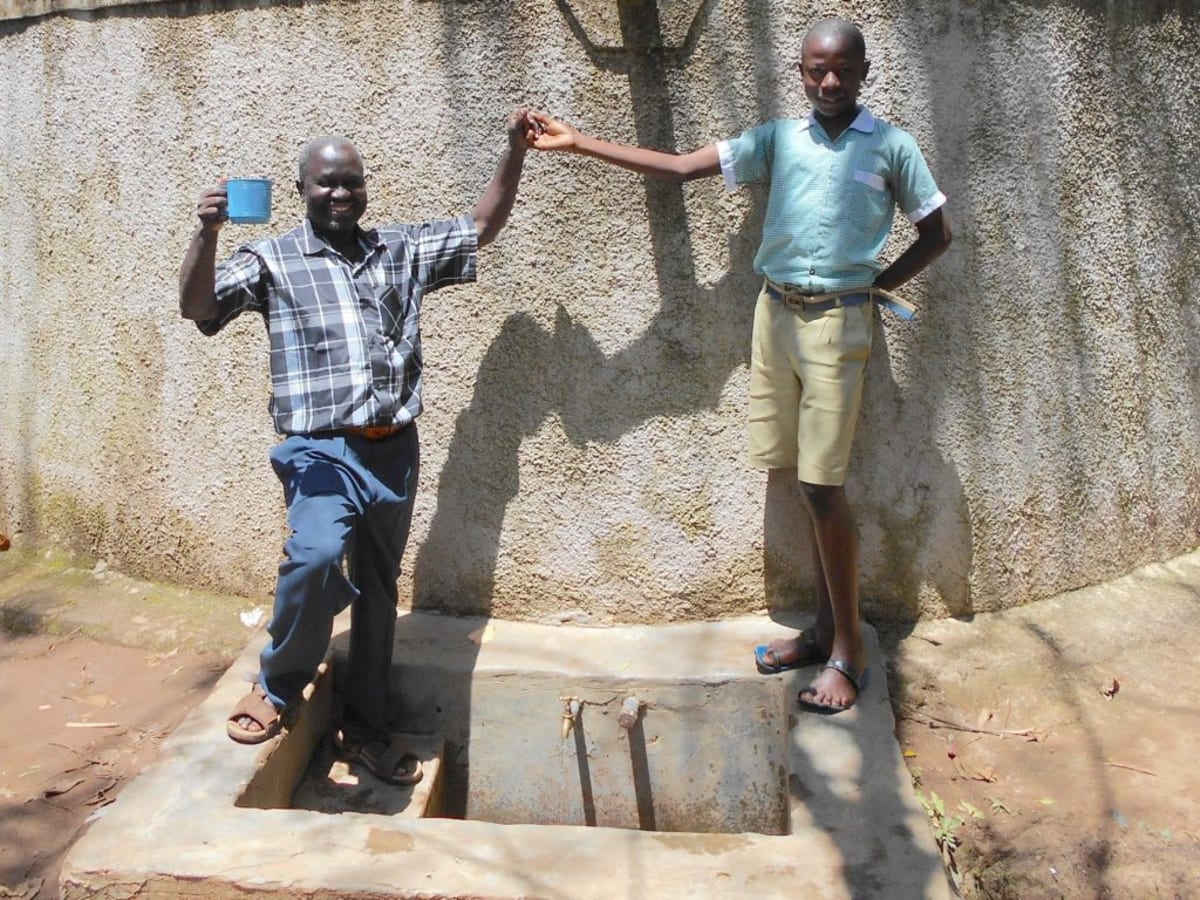Eshisenye Primary School is located at Shianda region. Residents of this village grow sugarcane as their major cash crop. The sugar company did quite well in past years and farmers made a lot of money from the crop.
Some women told us that whenever their husbands, who are looked to as the head of the household, received a check for sugarcane delivery they would disappear from the home and go to the cities to spend all the money.
But currently, the sugar industry is failing. It is doing so poorly that people are uprooting their sugarcane crops from the farms to grow other things. Eshisenye School, therefore, has students from poor families that cannot even afford a pair of shoes.
The principal begged us to go to primary school during the baseline survey at Eshisenye Girls Secondary School since they suffer from the same problem of not having sufficient safe water for consumption.
We visited the school in the morning when pupils are rushing to the school. We were humbled to see some malnourished pupils carrying water in a plastic container to school.
A normal day in this school begins when the young ones arrive early carrying the water from their homes. They use the same water to clean the school and prepare teacher meals.
At 7:20am the normal lessons begin, but a good number of students fail to concentrate well in class since they are already tired from carrying the water from home.
Teachers and pupils reportedly suffer from water-related diseases as a result of consuming unsafe water from unknown sources.
"Taking water from unknown sources has been the biggest challenge for both pupils and teachers," Mr. Moses Waswa, a teacher at the school, said.
"The majority have contacted waterborne diseases and as a result fail to attend to class lessons."
The students looked like people who are serving a jail term, with old uniforms in tatters. It was hard to imagine what these children have to go through to finish a basic primary education in this school with the burden of carrying water to school for eight years.
What touched us the most was the pit latrines. Since the students have no shoes and the toilets are dirty, one had to carry stones to place on the floor and stand on while going to the bathroom. Those stones are then discarded and a student must bring in new ones to use the latrine.
"This is a God-given project and it will go along holistically improving the performance of the school and curb water-related diseases," Mr. Waswa said.
At 5pm, the lessons end and pupils are released to go home and help their parents.
Here’s what we’re going to do about it:
Training
Training will be held for two days. The facilitator will use PHAST (participatory hygiene and sanitation transformation), ABCD (asset-based community development), CTC (child to child), lectures, group discussions, and handouts to teach health topics and ways to promote good practices within the school. The CTC method will prepare students to lead other students into healthy habits, as well as kickstart a CTC club for the school.
Handwashing Stations
This CTC club will oversee the new facilities, such as handwashing stations, and make sure they are kept clean and in working condition. The two handwashing stations will be delivered to the school, and the club will fill them with water on a daily basis and make sure there is always a cleaning agent such as soap or ash.
VIP Latrines
Two triple-door latrines will be constructed with local materials that the school will help gather. Three doors will serve the girls while the other three serve the boys. And with a new source of water on school grounds, students and staff should have enough to keep these new latrines clean.
Rainwater Catchment Tank
A 50,000-liter rainwater catchment tank will help alleviate the water crisis at this school. The school will also help gather the needed materials such as sand, rocks, and water from the spring for mixing cement. Once finished, this tank can begin catching rainfall that will be used by the school’s students and staff.
We and the school strongly believe that with this assistance, standards will significantly improve. These higher standards will translate to better academic performance!

 Rainwater Catchment
Rainwater Catchment
 Rehabilitation Project
Rehabilitation Project







































